Abstract
The cross-bridge formalism of T. Hill has been incorporated into the nonlinear differential equations describing planar flagellar motion in an external viscous medium. A stable numerical procedure for solution of these equations is presented. A self-consistent two-state diagram with curvature-dependent rate functions is sufficient to generate stable propagating waves with frequencies and amplitudes typical of sperm flagella. For a particular choice of attachment and detachment rate functions, reasonable variation of frequency and wave speed with increasing viscosity is also obtained. The method can easily be extended to study more realistic state diagrams.
Full text
PDF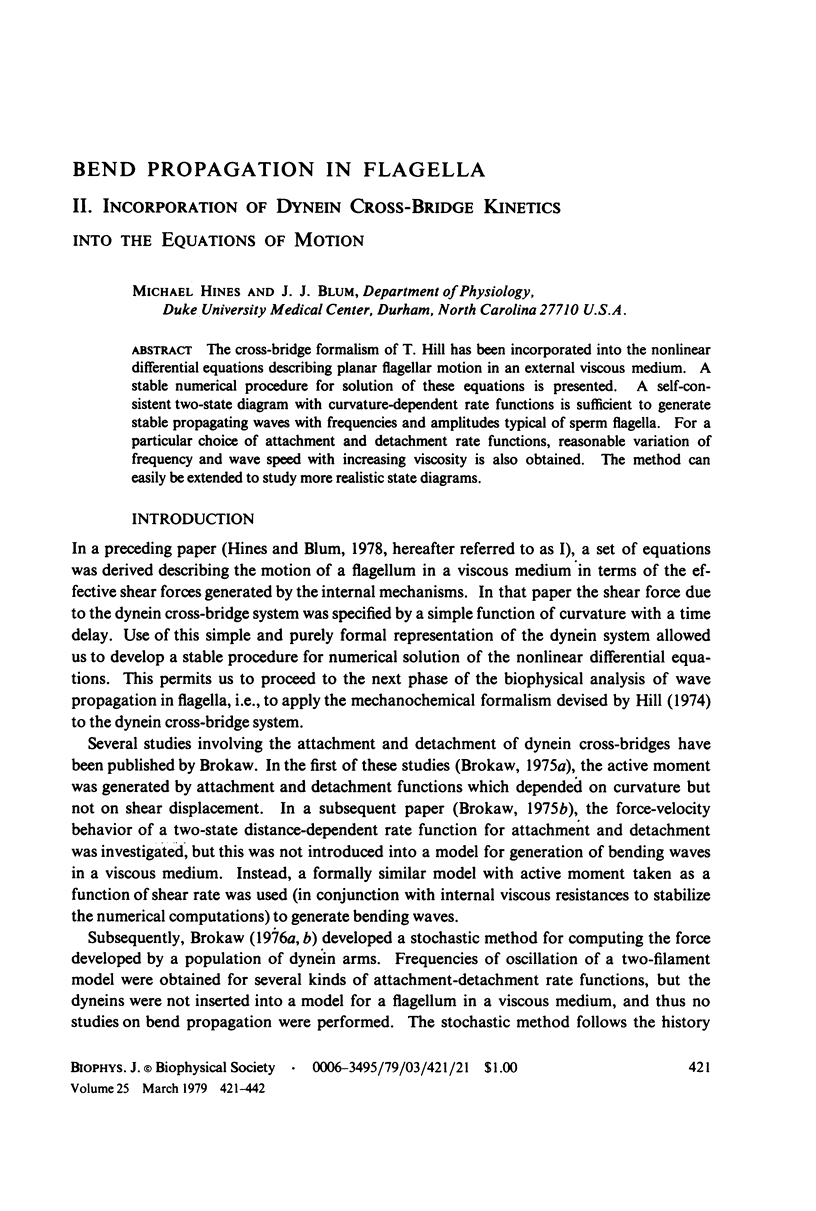
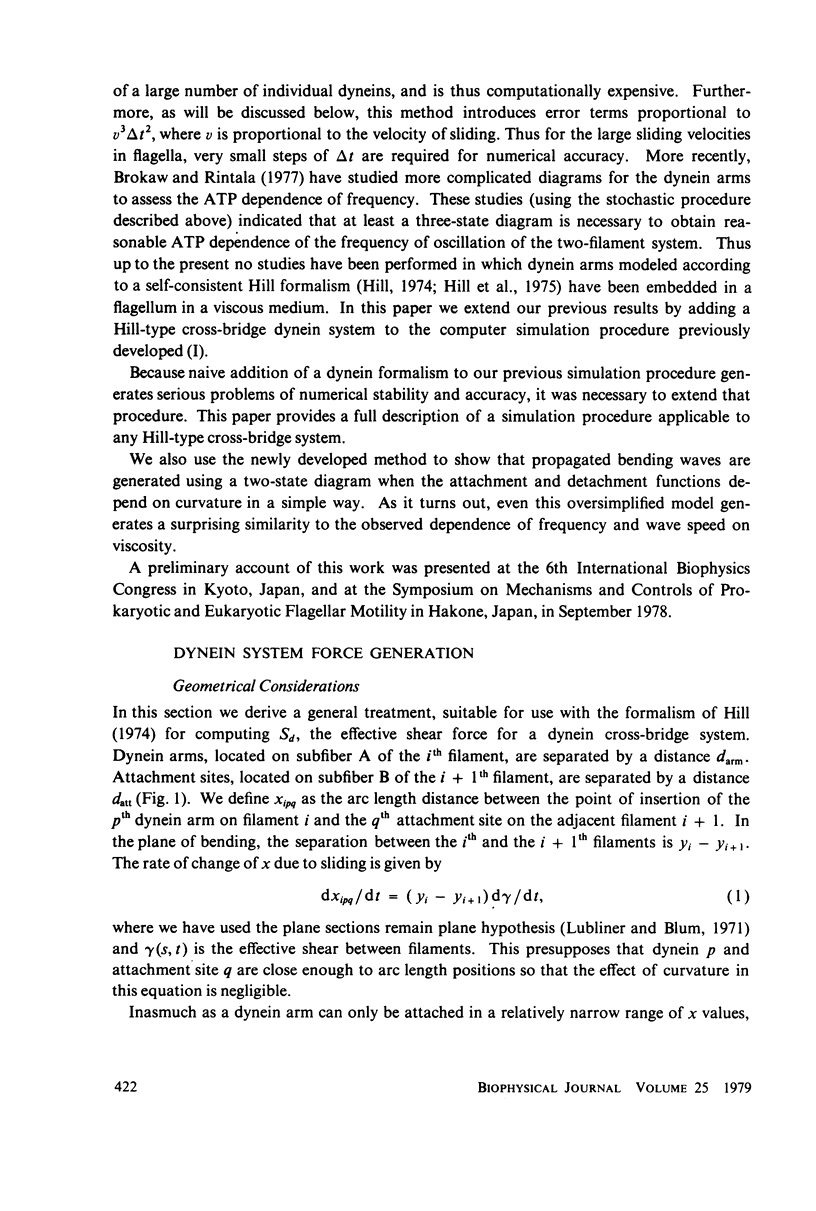
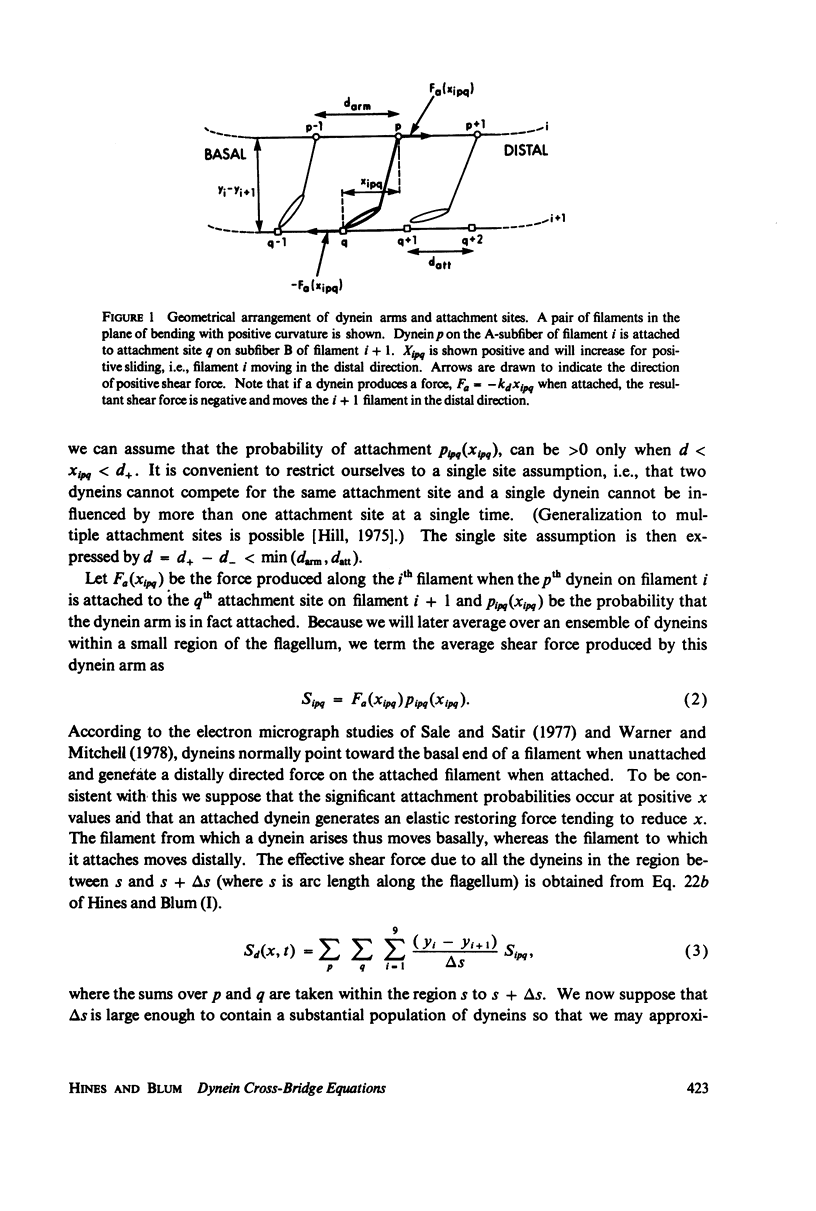
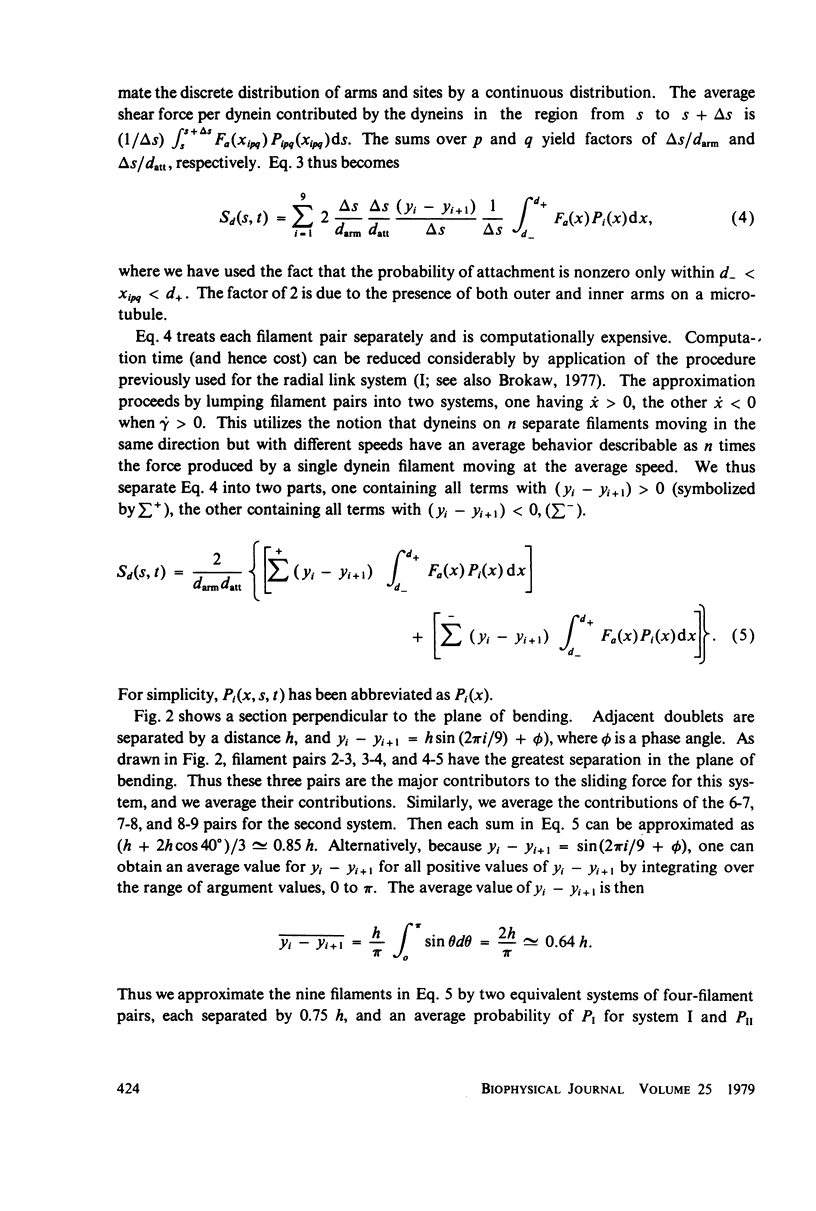
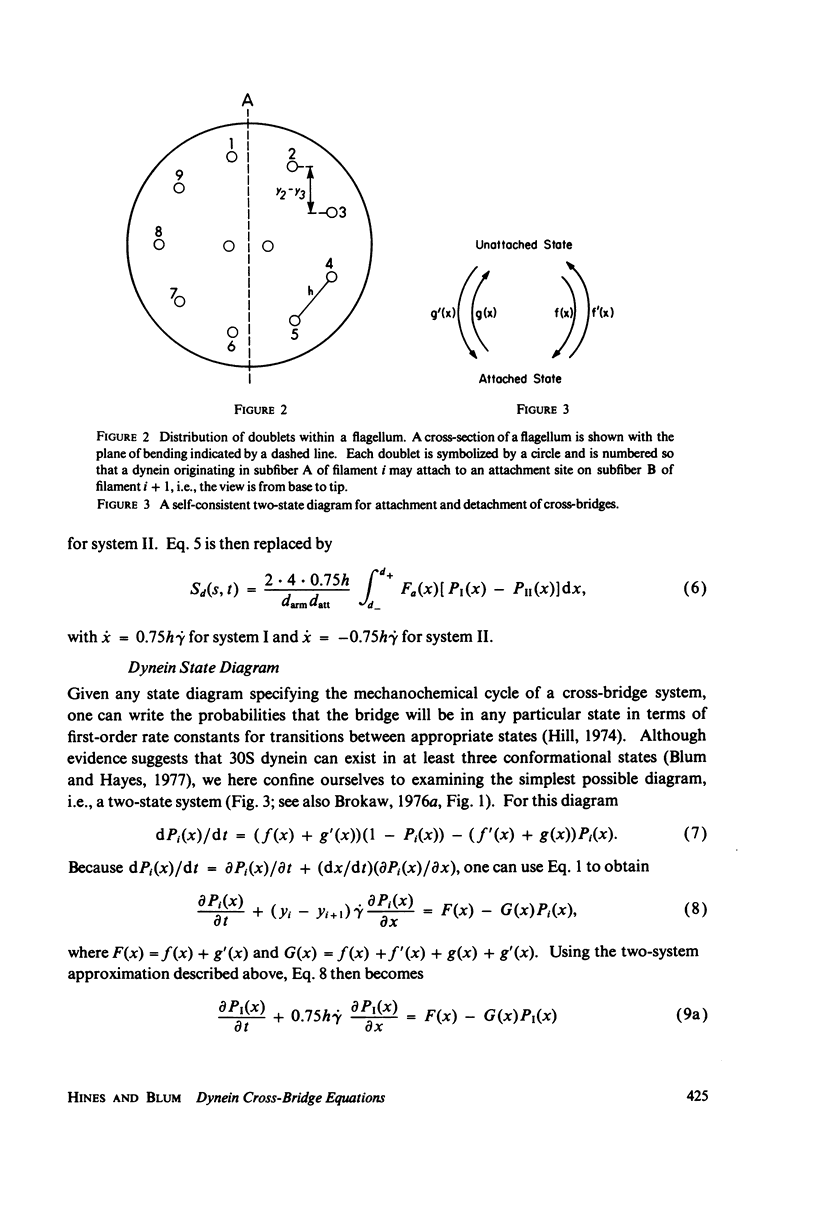
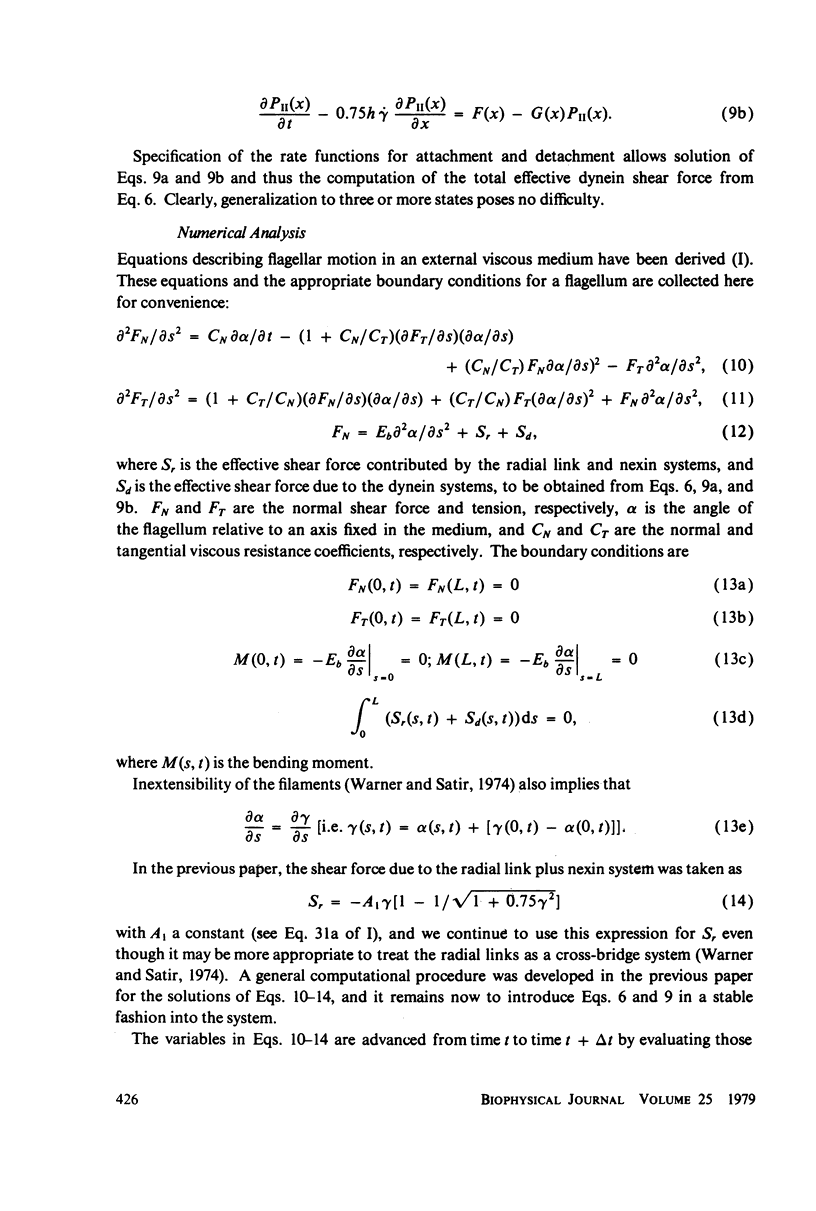
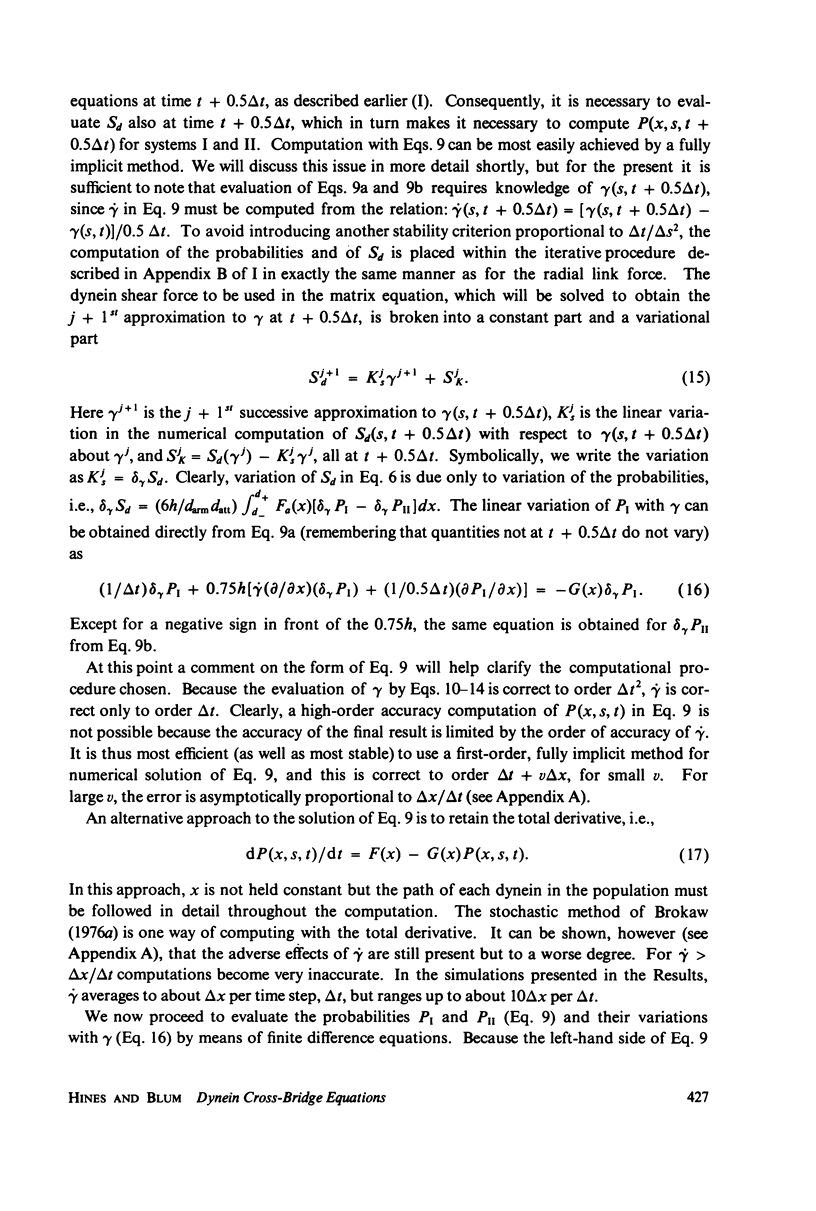
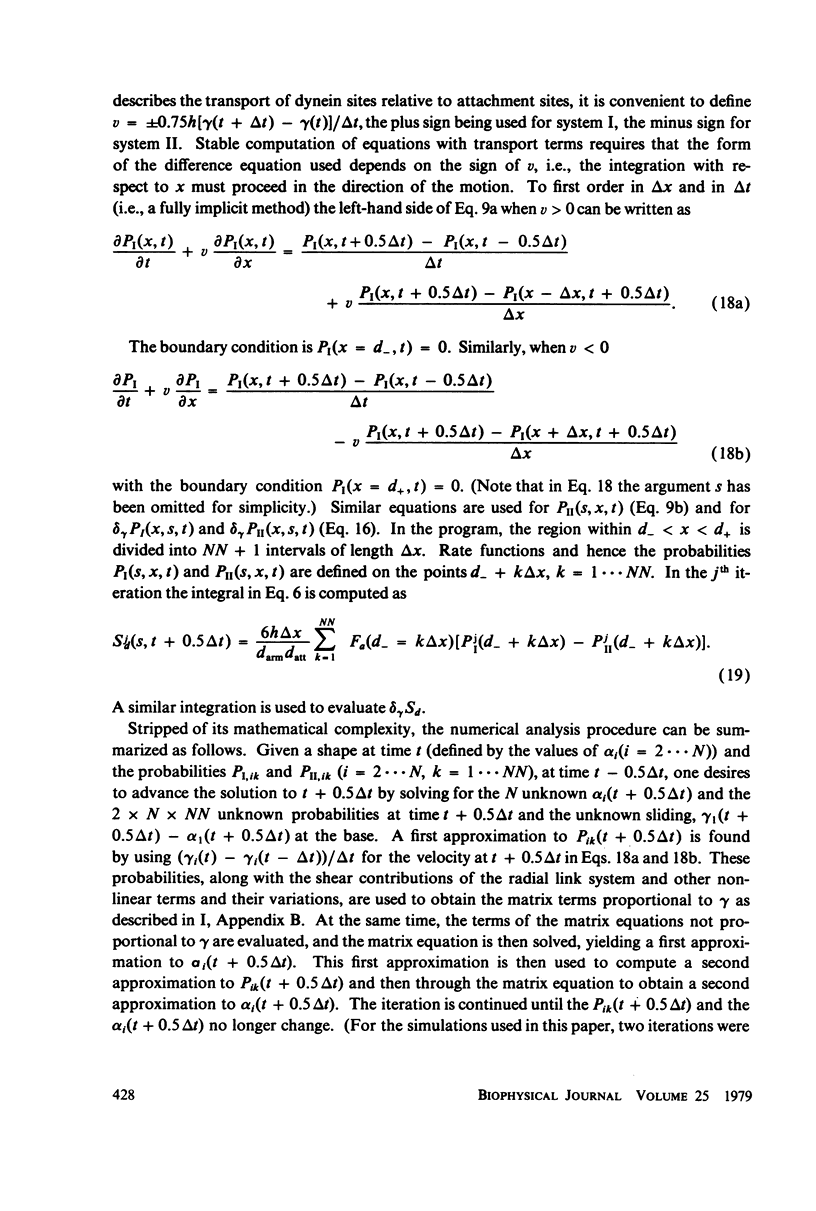

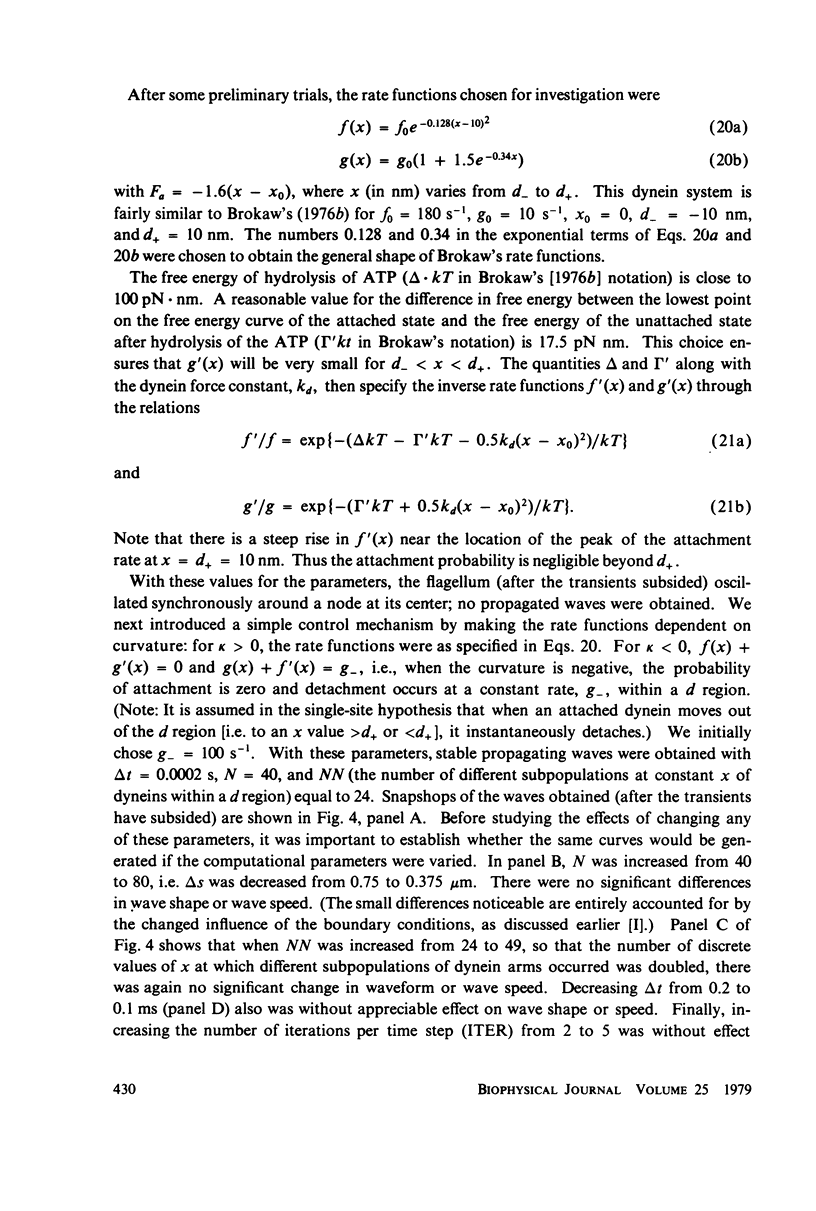
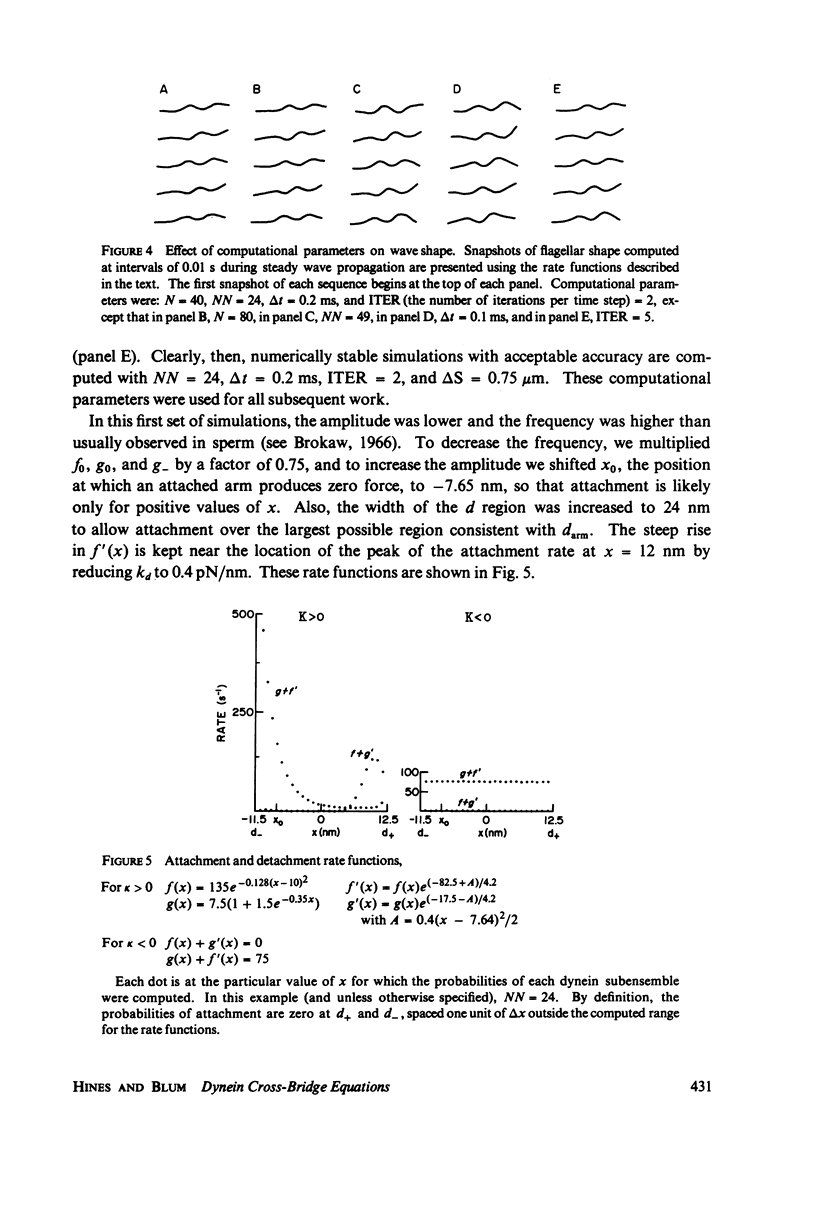
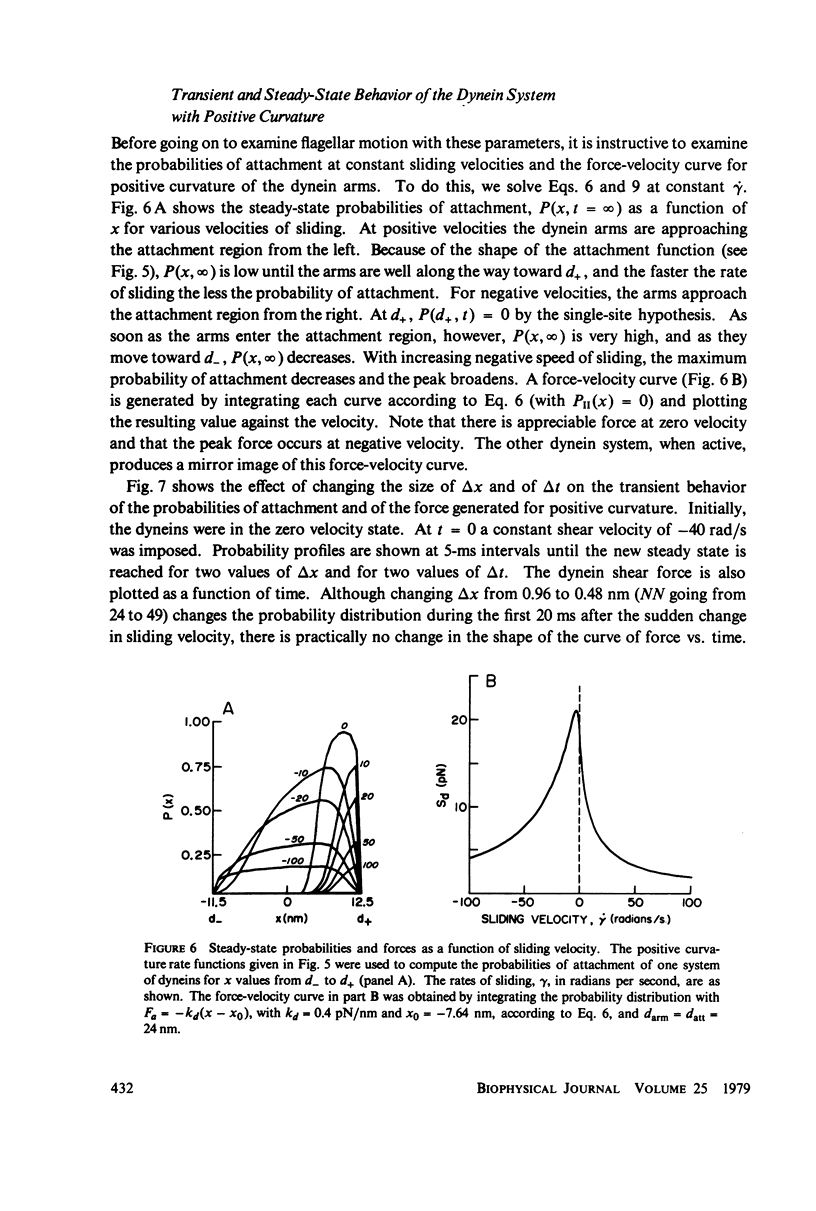
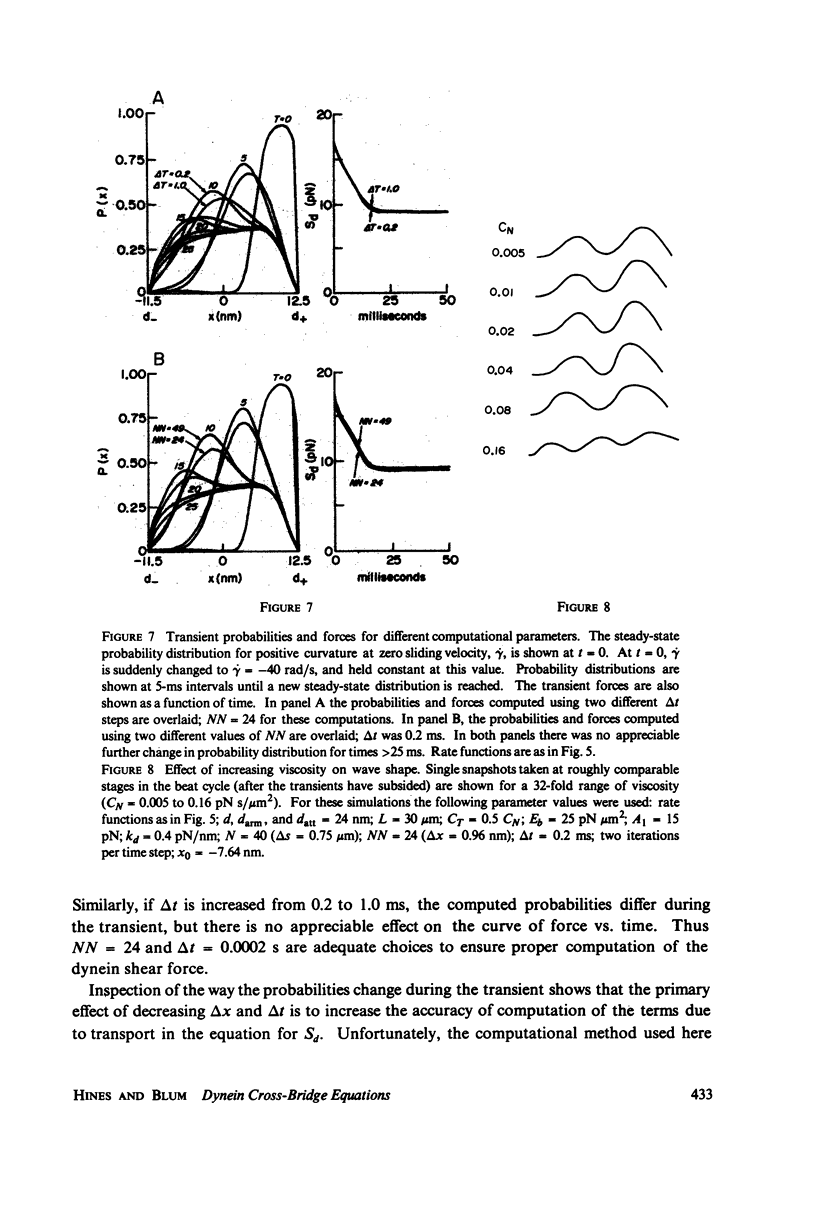
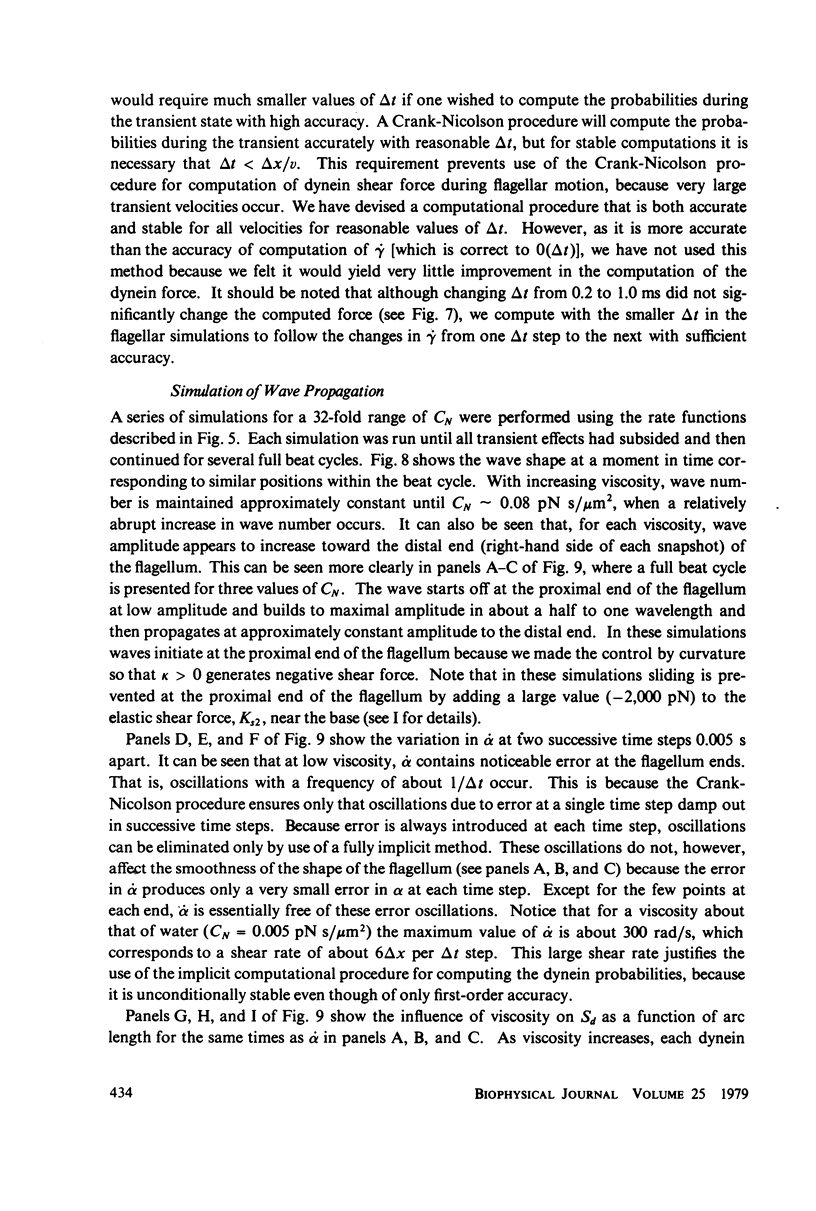
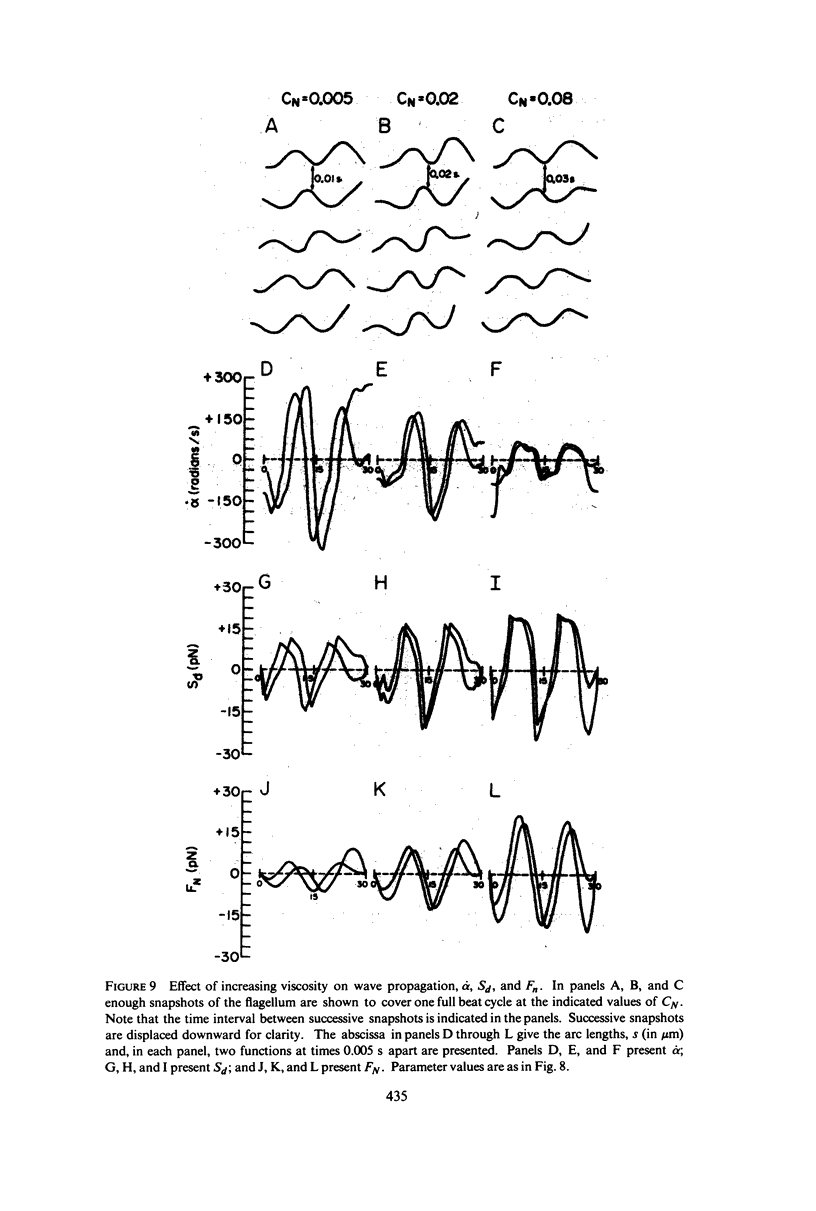
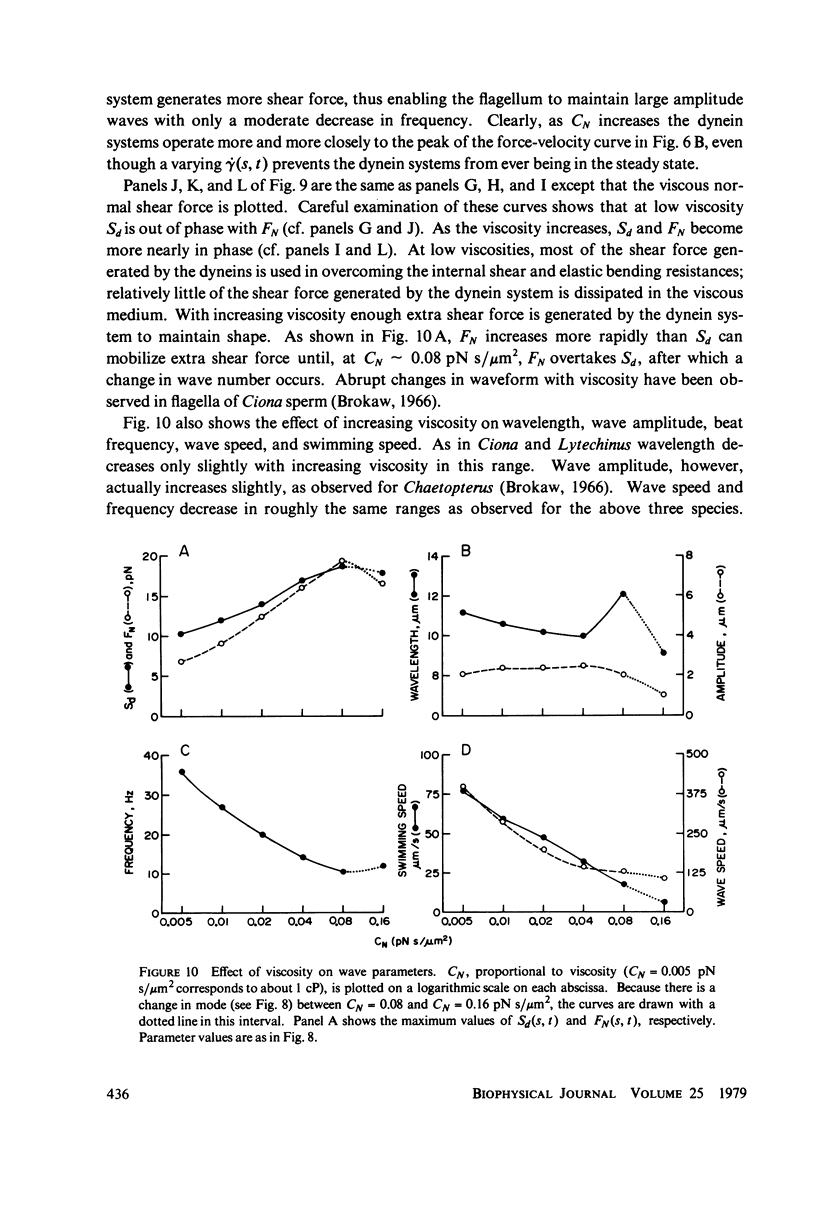
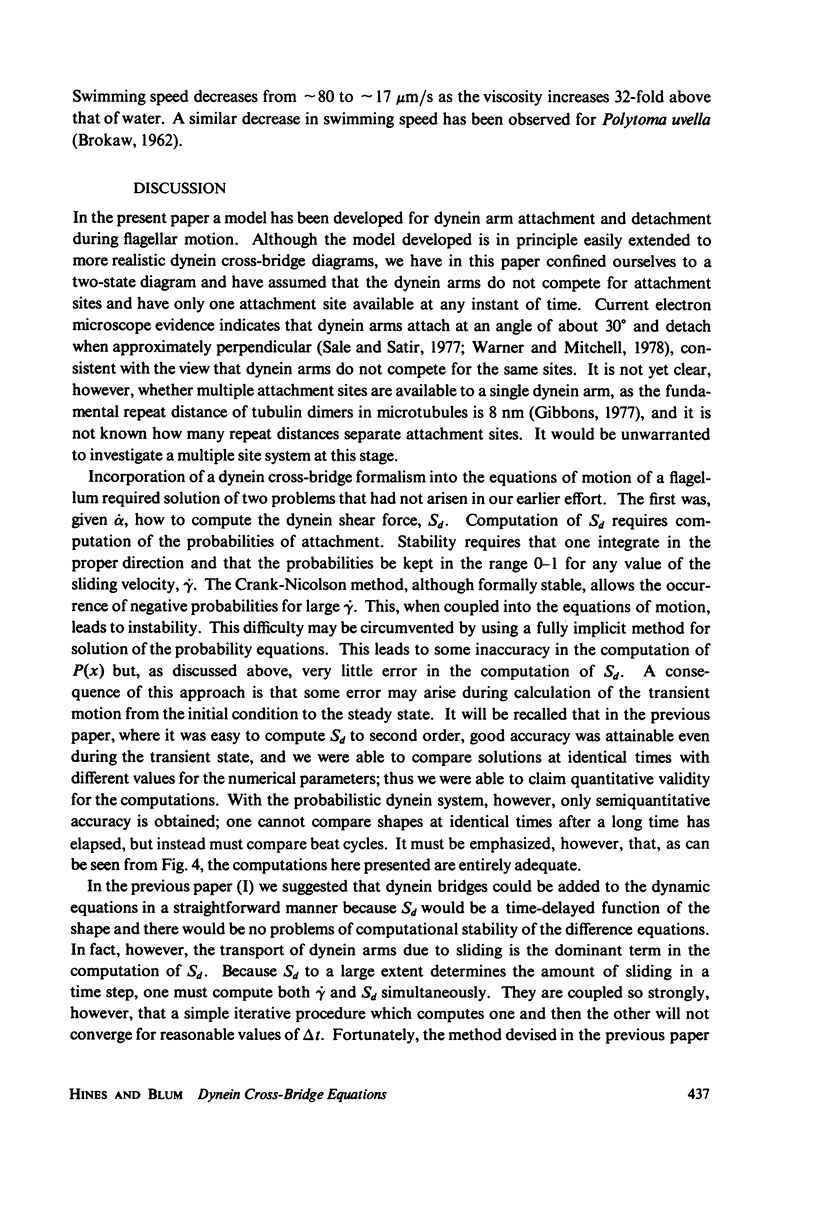
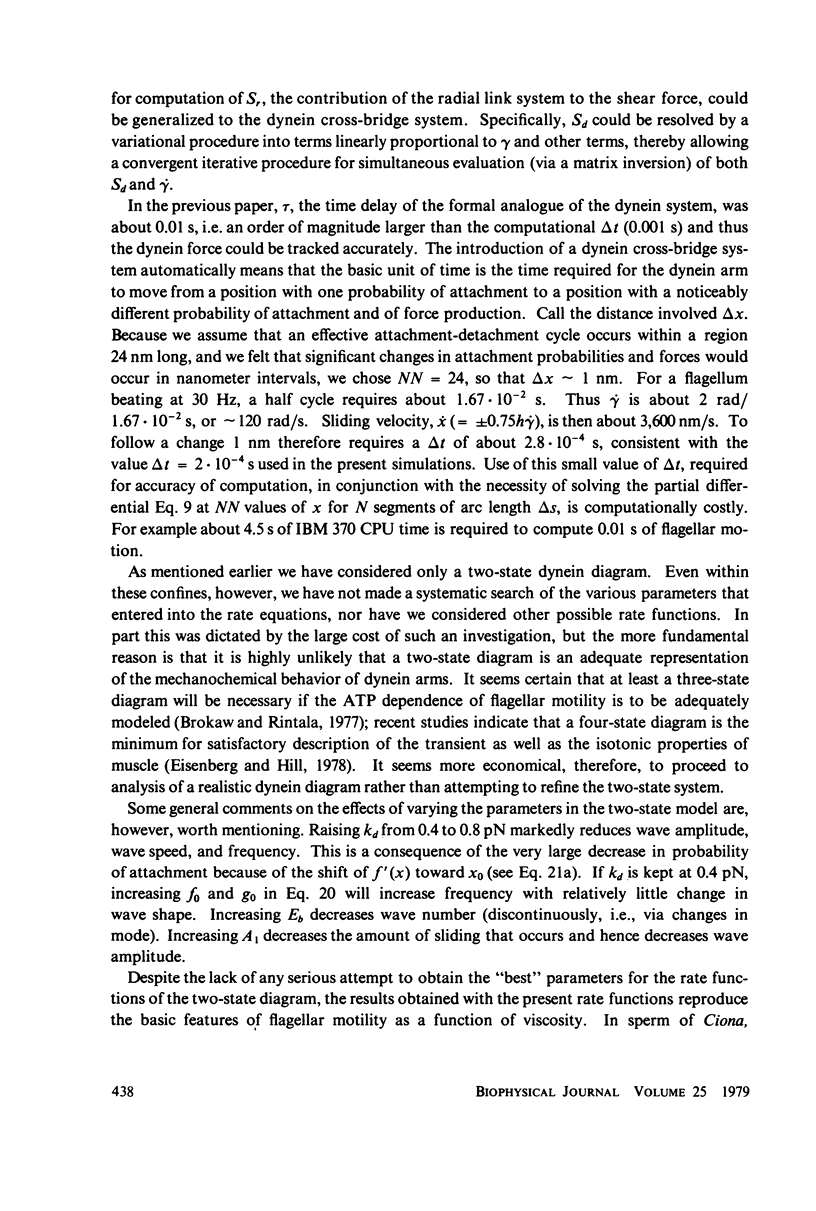
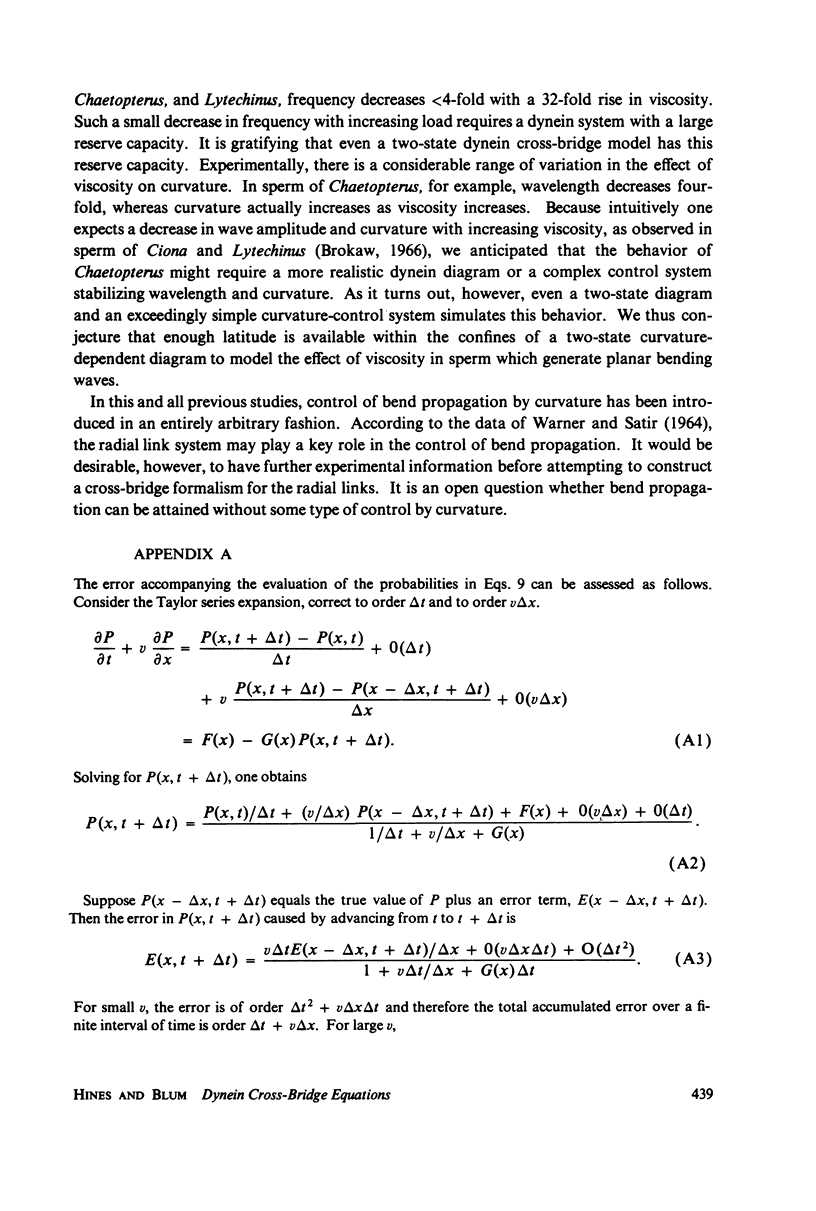
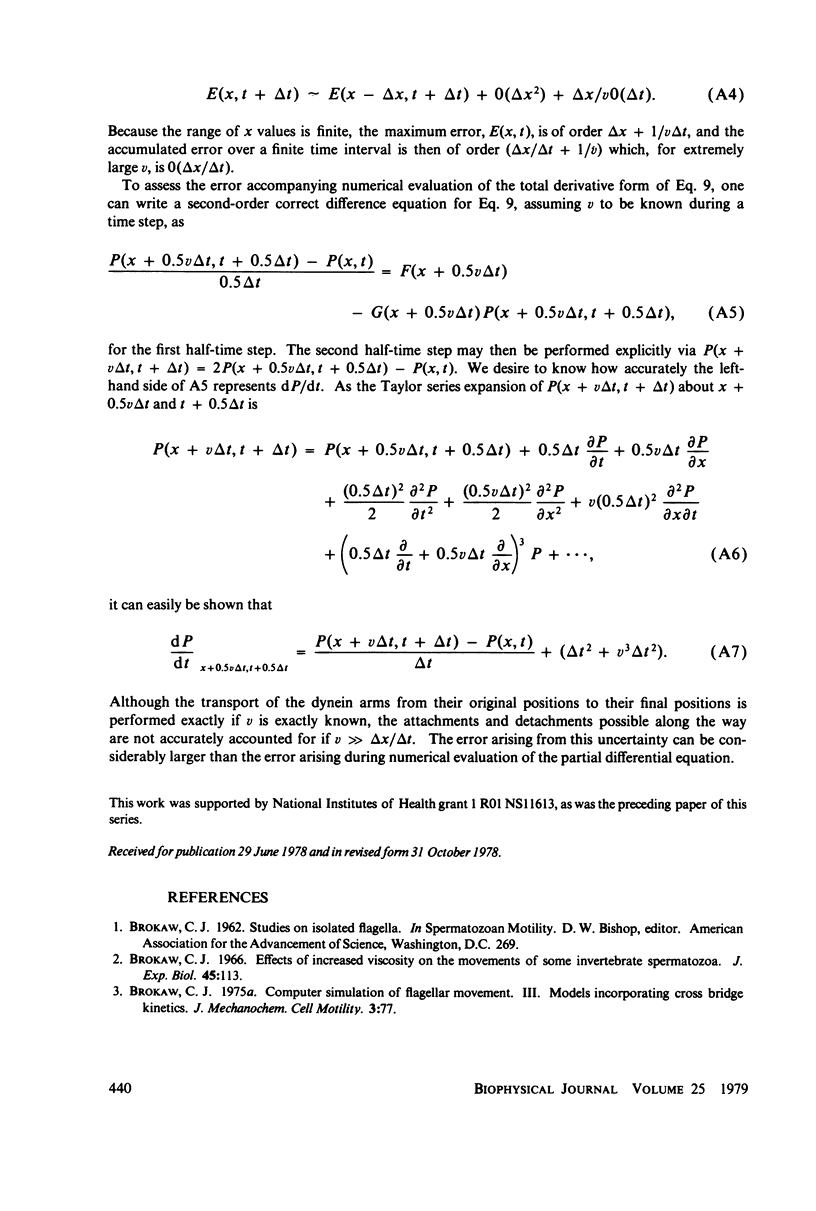
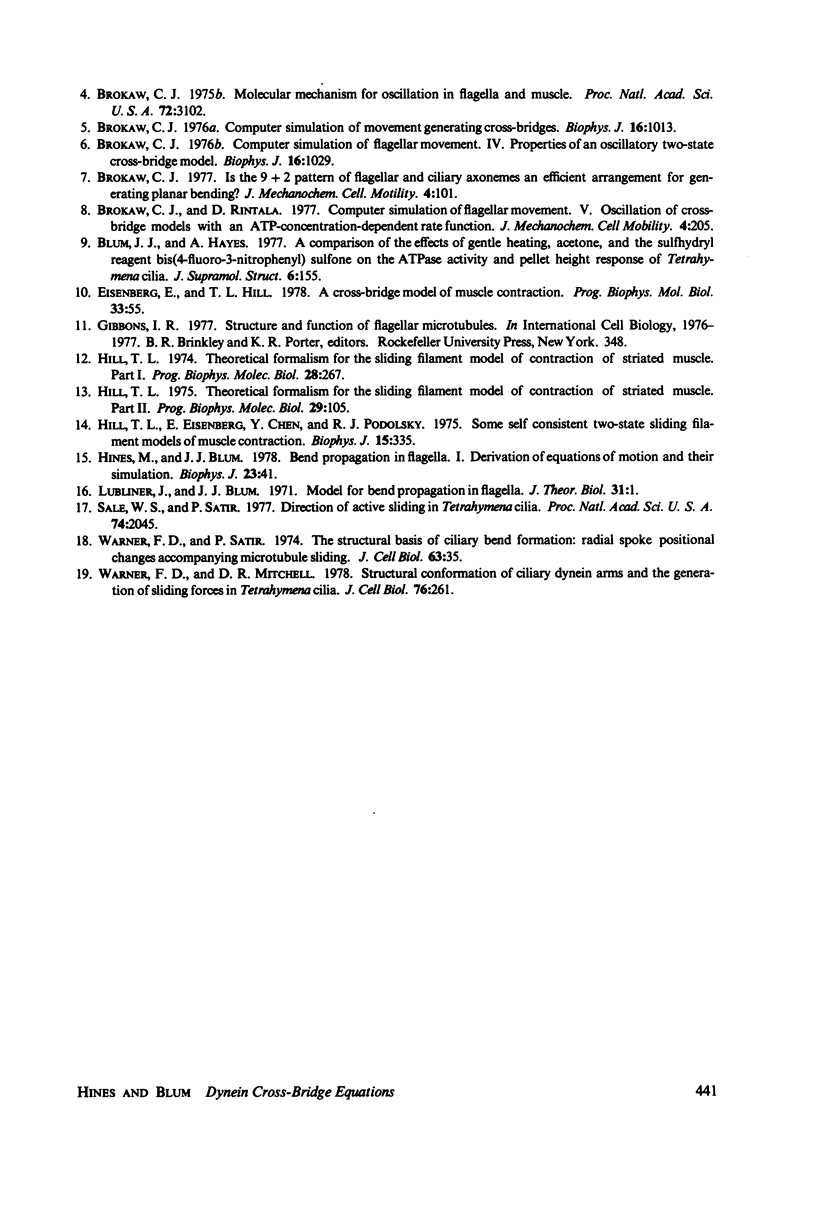
Selected References
These references are in PubMed. This may not be the complete list of references from this article.
- Blum J. J., Hayes A. A comparison of the effects of gentle heating, acetone, and the sulfhydryl reagent bis (4-fluoro-3-nitrophenyl) sulfone on the ATPase activity and pellet height response of tetrahymena cilia. J Supramol Struct. 1977;6(2):155–167. doi: 10.1002/jss.400060202. [DOI] [PMC free article] [PubMed] [Google Scholar]
- Brokaw C. J. Computer simulation of flagellar movement. IV. Properties of an oscillatory two-state cross-bridge model. Biophys J. 1976 Sep;16(9):1029–1041. doi: 10.1016/S0006-3495(76)85753-0. [DOI] [PMC free article] [PubMed] [Google Scholar]
- Brokaw C. J. Computer simulation of movement-generating cross-bridges. Biophys J. 1976 Sep;16(9):1013–1027. doi: 10.1016/S0006-3495(76)85752-9. [DOI] [PMC free article] [PubMed] [Google Scholar]
- Brokaw C. J. Effects of increased viscosity on the movements of some invertebrate spermatozoa. J Exp Biol. 1966 Aug;45(1):113–139. doi: 10.1242/jeb.45.1.113. [DOI] [PubMed] [Google Scholar]
- Brokaw C. J. Is the 9+2 pattern of flagellar and ciliary axonemes an efficient arrangement for generating planar bending? J Mechanochem Cell Motil. 1977 Jun;4(2):101–111. [PubMed] [Google Scholar]
- Brokaw C. J. Molecular mechanism for oscillation in flagella and muscle. Proc Natl Acad Sci U S A. 1975 Aug;72(8):3102–3106. doi: 10.1073/pnas.72.8.3102. [DOI] [PMC free article] [PubMed] [Google Scholar]
- Brokaw C. J., Rintala D. R. Computer simulation of flagellar movement. III. Models incorporating cross-bridge kinetics. J Mechanochem Cell Motil. 1975;3(2):77–86. [PubMed] [Google Scholar]
- Brokaw C. J., Rintala D. Computer simulation of flagellar movement. V. oscillation of cross-bridge models with an ATP-concentration-dependent rate function. J Mechanochem Cell Motil. 1977 Sep;4(3):205–232. [PubMed] [Google Scholar]
- Eisenberg E., Hill T. L. A cross-bridge model of muscle contraction. Prog Biophys Mol Biol. 1978;33(1):55–82. doi: 10.1016/0079-6107(79)90025-7. [DOI] [PubMed] [Google Scholar]
- Hill T. L., Eisenberg E., Chen Y. D., Podolsky R. J. Some self-consistent two-state sliding filament models of muscle contraction. Biophys J. 1975 Apr;15(4):335–372. doi: 10.1016/S0006-3495(75)85823-1. [DOI] [PMC free article] [PubMed] [Google Scholar]
- Hill T. L. Theoretical formalism for the sliding filament model of contraction of striated muscle. Part I. Prog Biophys Mol Biol. 1974;28:267–340. doi: 10.1016/0079-6107(74)90020-0. [DOI] [PubMed] [Google Scholar]
- Hill T. L. Theoretical formalism for the sliding filament model of contraction of striated muscle. Part II. Prog Biophys Mol Biol. 1975;29(2):105–159. doi: 10.1016/0079-6107(76)90021-3. [DOI] [PubMed] [Google Scholar]
- Hines M., Blum J. J. Bend propagation in flagella. I. Derivation of equations of motion and their simulation. Biophys J. 1978 Jul;23(1):41–57. doi: 10.1016/S0006-3495(78)85431-9. [DOI] [PMC free article] [PubMed] [Google Scholar]
- Lubliner J., Blum J. J. Model for bend propagation in flagella. J Theor Biol. 1971 Apr;31(1):1–24. doi: 10.1016/0022-5193(71)90117-2. [DOI] [PubMed] [Google Scholar]
- Sale W. S., Satir P. Direction of active sliding of microtubules in Tetrahymena cilia. Proc Natl Acad Sci U S A. 1977 May;74(5):2045–2049. doi: 10.1073/pnas.74.5.2045. [DOI] [PMC free article] [PubMed] [Google Scholar]
- Warner F. D., Mitchell D. R. Structural conformation of ciliary dynein arms and the generation of sliding forces in Tetrahymena cilia. J Cell Biol. 1978 Feb;76(2):261–277. doi: 10.1083/jcb.76.2.261. [DOI] [PMC free article] [PubMed] [Google Scholar]
- Warner F. D., Satir P. The structural basis of ciliary bend formation. Radial spoke positional changes accompanying microtubule sliding. J Cell Biol. 1974 Oct;63(1):35–63. doi: 10.1083/jcb.63.1.35. [DOI] [PMC free article] [PubMed] [Google Scholar]


